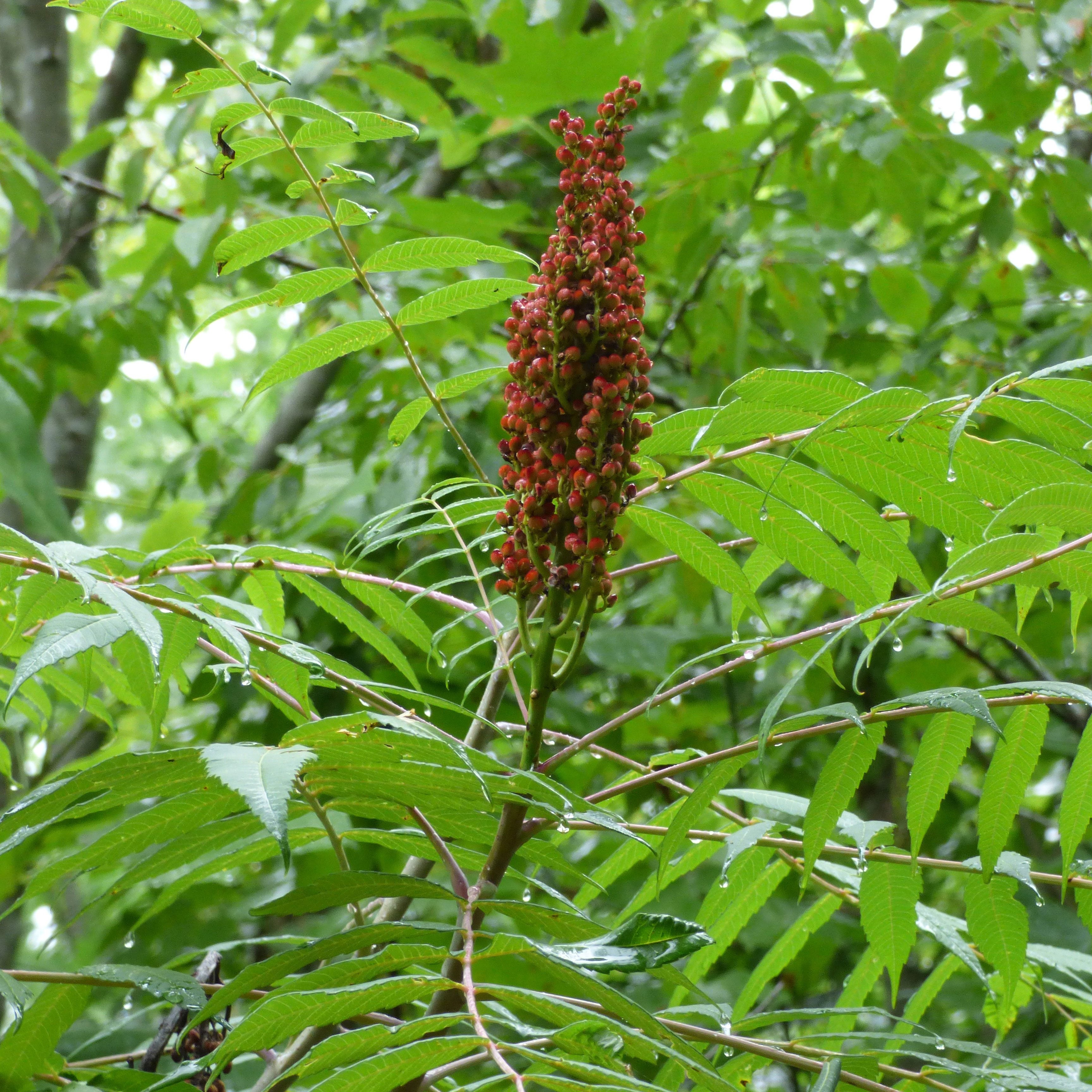Sumac Tree Info: Learn About Common Sumac Varieties For Gardens


Sumac trees and shrubs are interesting throughout the year. The show begins with large clusters of flowers in spring, followed by attractive, brilliantly colored fall foliage. The bright red clusters of autumn berries often last into winter. Read on for sumac tree info and growing tips.
Sumac Tree Types
Smooth sumac (Rhus glabra) and staghorn sumac (R. typhina) are the most common and readily available landscape species. Both grow 10 to 15 feet (3-5 m.) tall with a similar width, and have bright red fall colors. You can differentiate the species by the fact that the branches of staghorn sumac have a furry texture. They make excellent wildlife shrubs because they provide shelter and food for birds and small mammals. Both species grow well in containers, where they stay much smaller. Here are some additional sumac tree types to consider for your garden:
- Prairie flameleaf sumac (R. lanceolata) is a Texas native that is only hardy to zone 6. It grows as a 30 foot (9 m.) tree. The fall color is red and orange. This species is very heat tolerant.
- Tobacco sumac (R. virens) is an evergreen type with green leaves edged with pink. Grow it as a shrub or remove the lower limbs and grow it as a small tree. It reaches a height of 8 to 12 feet (2-4 m.).
- Evergreen sumac makes a nice, tight hedge or screen. Only the females make flowers and berries.
- Fragrant sumac (R. aromatica) has green flowers that don't show well against the foliage, but it more than makes up for this shortcoming with fragrant foliage, spectacular fall color, and ornamental fruit. This is a good plant for stabilizing embankments and naturalizing in areas where the soil is poor.
Growing Sumac in the Landscape
Increasing numbers of gardeners are growing sumac in the landscape for its striking fall color. Most species have leaves that turn bright red in fall, but there are also yellow and orange sumac varieties for gardens. If you are interested in a spectacular fall show, make sure you get a deciduous rather than an evergreen variety. Sumac is a versatile plant that grows in almost any well-drained soil. Full sun or partial shade is fine for most varieties, but flameleaf or prairie sumac has better flowers and fall color if grown in full sun. The plants are drought tolerant, but grow taller if irrigated regularly in the absence of rain. The hardiness depends on the variety. Most are hardy to U.S. department plant hardiness zone 3.
Fun Fact: What is Sumac-ade?
You can make a refreshing beverage that resembles lemonade from the berries of smooth or staghorn sumac. Here are the instructions:
- Gather about a dozen large clusters of berries.
- Squeeze and mash them into a bowl containing about a gallon (3.8 L.) of cold water. Drop the mashed berries into the bowl along with the juice.
- Let the mixture sit for five to ten minutes to pick up the flavor of the berries.
- Strain the mixture through cheesecloth and into a pitcher. Add sweetener to taste.
- Sumac-ade is best when served over ice.
Gardening tips, videos, info and more delivered right to your inbox!
Sign up for the Gardening Know How newsletter today and receive a free copy of our e-book "How to Grow Delicious Tomatoes".

Jackie Carroll has written over 500 articles for Gardening Know How on a wide range of topics.
-
 Looking For Plants To Give You The Soft And Fuzzies? Try These 5 Fuzzy Leaf Plant Options
Looking For Plants To Give You The Soft And Fuzzies? Try These 5 Fuzzy Leaf Plant OptionsLovers of texture, drama, silver foliage and tactile plants will adore these special sensory garden additions. These fuzzy leaf plant options will leave you all aglow
By Susan Albert
-
 Get Ready For A Summer Of Hummers! Grow These Full Sun Hummingbird Plants and Flowers
Get Ready For A Summer Of Hummers! Grow These Full Sun Hummingbird Plants and FlowersIf you’re lucky enough to enjoy a sunny backyard, make sure you are maxing out on your pollinator opportunities and grow these full sun hummingbird plants and flowers
By Tonya Barnett